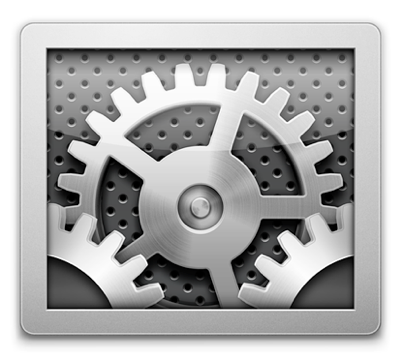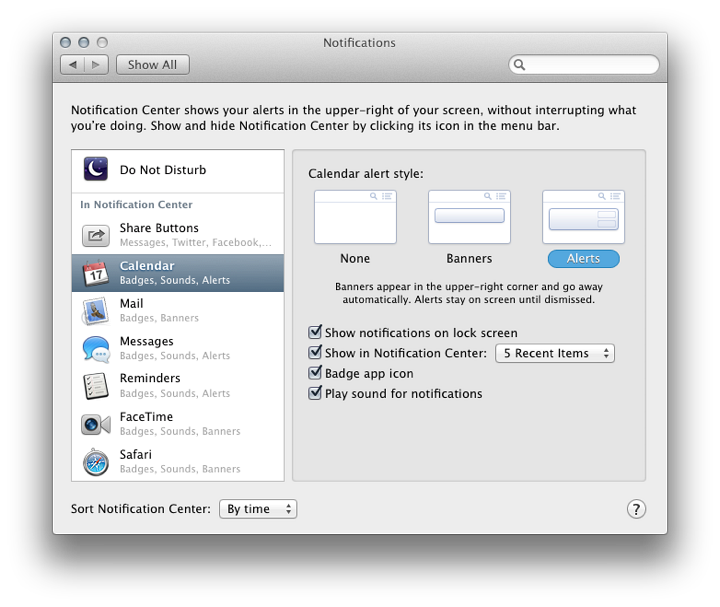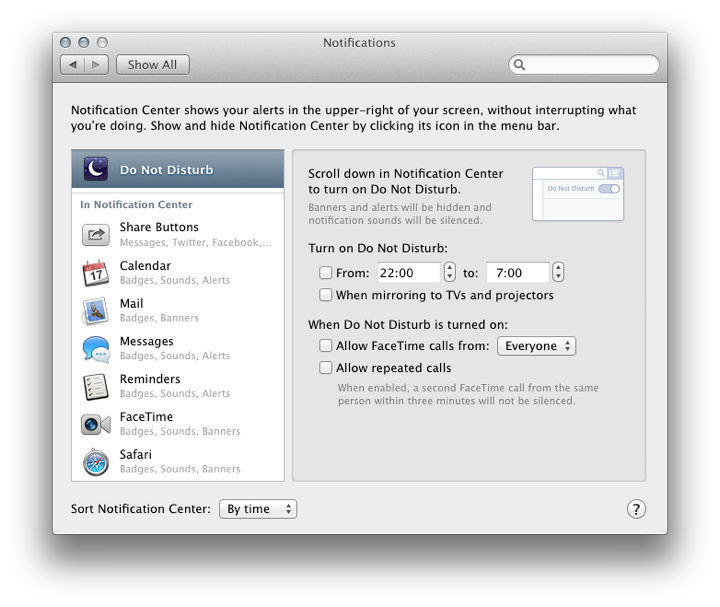|
By Graham K. Rogers

System Preferences in OS X has had a number of changes with the update to version 10.9, Mavericks. Notifications uses a similar method of displaying incoming information as may be found on iOS devices on the Mac. As with other preferences, the services that use this feature have been expanded in this release, although the preference pane itself is unchanged.
The purpose of Notifications - originally introduced with the iOS 5 update - is to provide a user with onscreen input of incoming information without interruption to ongoing tasks or when the display is off. There are however several differences to the way this works on iOS devices, because of the nature (and use) of the computer. There are also a number of changes since Mountain Lion (OS X 10.8).
Instead of the semi-transparent full-screen display (iPhone) or a large panel (iPad) the notifications panel is a thin screen display to the right of the monitor that slides away when not in use. It is opened and closed by clicking on the 3-line icon at the extreme right of the menu bar.
The Notifications preferences panel is in three parts: a text explanation at the top, with information displays below. To the left is a list of apps or services that use the Notification Center; to the right are controls for the apps. These will differ depending on the specific app highlighted in the left-hand column.

When first used, the apps listed to the left were Apple only items, such as Calendar, FaceTime and Mail. These were in a section marked, "In Notification Center." There are two additions above the apps: Do Not Disturb; and Share Buttons.

The number of apps now available in the Notifications Center has been expanded considerably. As apps or services become available for the Notifications Center - through download or update, for example - they are automatically added to the list.
At the bottom of the list is a further section, "Not in Notification Center." If any apps listed are deactivated - deselecting the "Show in Notifications Center" checkbox - they move from the top section to this inactive area. They are returned to the active area by checking the box again.
Items in the list in System Preferences are displayed in the same top to bottom order in the Notifications panel when viewed. Items may be clicked and dragged into the preferred order in the preferences panel. Changes are immediate
Each item in the list has settings which offer options as to how the incoming data is displayed. To the top of this options panel is the alert style: None, Banners or Alerts. Text below explains that Banners appear in the upper-right corner and go away automatically. Alerts stay on screen until dismissed. Each app will have its own specific settings using checkboxes and buttons.
The banner is thin and contains the basic information. Alerts are broader and have two buttons (e.g. "Delete" and "Reply" for Mail). The system voice can also announce the arrival of such notifications.
At the bottom half of the panel are three checkboxes: Show in Notification Center; Badge app icon; and Play sound when receiving notifications (except Twitter, Facebook or Linkedin).
- Show in Notification Center turns the feature on for the specific app or service highlighted. Alongside is a button with options for the number of recent items displayed: 1, 5, 10 and 20
- The Badge app icon shows a small icon of the specific app for easy identification
- Play sound when receiving notifications may be useful for certain apps or services, but if there are a lot of incoming messages, this may disturb the user so may be deselected. As above, this feature is not available for Twitter, Facebook or Linkedin.
At the bottom of the panel is a button which allows sorting of the Notification Center by time or manually.
See Also:
Graham K. Rogers teaches at the Faculty of Engineering, Mahidol University in Thailand where he is also Assistant Dean. He wrote in the Bangkok Post, Database supplement on IT subjects. For the last seven years of Database he wrote a column on Apple and Macs.
|






